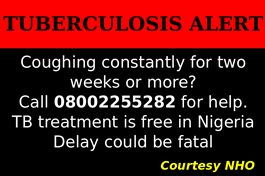Gonorrhoea is becoming untreatable, WHO warns

Gonorrhoea infections are increasing, but doctors are running out of antibiotics that can fight the increasingly resistant bacteria causing the sexual disease, the World Health Organisation (WHO) warned on Friday.
Gonorrhoea is a sexually transmitted infection (STI) caused by a bacteria called Neisseriagonorrhoeae or gonococcus. It is mainly found in discharge from the penis and in vaginal fluid and can easily pass between people through unprotected vaginal, oral or anal sex.
Two-thirds of the countries that report resistance data to the WHO have seen cases in recent years in which their antibiotics of last resort no longer worked against gonococcibacteria.
“These cases may just be the tip of the iceberg since systems to diagnose and report untreatable infections are lacking in lower-income countries where gonorrhoea is actually more common,” WHO expert, Teodora Wi, said in Geneva.
The UN health agency estimates that 78 million people are infected annually with the disease. Britain and the U.S. reported increases of more than 10 per cent in 2015.
Cases among gay men in France doubled between 2013 and 2015. Rates are highest in the African region, where one in 10 men is infected annually.The main reasons for the increase are decreasing condom use, increased mobility as well as poor disease monitoring and inadequate treatment, according to the WHO.
Gonorrhoea can infect the genitals, rectum and throat. It can lead to inflammation of the pelvic and to infertility. Currently, only three new drugs are being developed, because pharmaceutical companies know that the bacteria will soon become resistant to any new antibiotic.
To control gonorrhoea, doctors not only need new medicines, but also a rapid diagnostic tool and a vaccine, which are yet to be developed, WHO Antimicrobial expert, Marc Sprenger, said. (dpa/NAN)
Fact Sheet on Antibiotic resistance
Key facts
● Antibiotic resistance is one of the biggest threats to global health, food security, and development today.
● Antibiotic resistance can affect anyone, of any age, in any country.
● Antibiotic resistance occurs naturally, but misuse of antibiotics in humans and animals is accelerating the process.
● A growing number of infections – such as pneumonia, tuberculosis, and gonorrhoea – are becoming harder to treat as the antibiotics used to treat them become less effective.
●Antibiotic resistance leads to longer hospital stays, higher medical costs and increased mortality.
Introduction
Antibiotics are medicines used to prevent and treat bacterial infections. Antibiotic resistance occurs when bacteria change in response to the use of these medicines.
Bacteria, not humans or animals, become antibiotic-resistant. These bacteria may infect humans and animals, and the infections they cause are harder to treat than those caused by non-resistant bacteria.
Antibiotic resistance leads to higher medical costs, prolonged hospital stays, and increased mortality.
The world urgently needs to change the way it prescribes and uses antibiotics. Even if new medicines are developed, without behaviour change, antibiotic resistance will remain a major threat. Behaviour changes must also include actions to reduce the spread of infections through vaccination, hand washing, practising safer sex, and good food hygiene.
Scope of the problem
Antibiotic resistance is rising to dangerously high levels in all parts of the world. New resistance mechanisms are emerging and spreading globally, threatening our ability to treat common infectious diseases. A growing list of infections – such as pneumonia, tuberculosis, blood poisoning and gonorrhoea – are becoming harder, and sometimes impossible, to treat as antibiotics become less effective.
Where antibiotics can be bought for human or animal use without a prescription, the emergence and spread of resistance is made worse. Similarly, in countries without standard treatment guidelines, antibiotics are often over-prescribed by health workers and veterinarians and over-used by the public.
Without urgent action, we are heading for a post-antibiotic era, in which common infections and minor injuries can once again kill.
Prevention and control
Antibiotic resistance is accelerated by the misuse and overuse of antibiotics, as well as poor infection prevention and control. Steps can be taken at all levels of society to reduce the impact and limit the spread of resistance.
Individuals
To prevent and control the spread of antibiotic resistance, individuals can:
◆ Only use antibiotics when prescribed by a certified health professional.
◆ Never demand antibiotics if your health worker says you don’t need them.
◆ Always follow your health worker’s advice when using antibiotics.
◆ Never share or use leftover antibiotics.
◆ Prevent infections by regularly by washing hands, preparing food hygienically, avoiding close contact with sick people, practising safer sex, and keeping vaccinations up to date.
Policy makers
To prevent and control the spread of antibiotic resistance, policy makers can:
◆ Ensure a robust national action plan to tackle antibiotic resistance is in place.
◆ Improve surveillance of antibiotic-resistant infections.
◆ Strengthen policies, programmes, and implementation of infection prevention and control measures.
◆ Regulate and promote the appropriate use and disposal of quality medicines.
Make information available on the impact of antibiotic resistance.
Health professionals
To prevent and control the spread of antibiotic resistance, health professionals can:
◆ Prevent infections by ensuring your hands, instruments, and environment are clean.
◆ Only prescribe and dispense antibiotics when they are needed, according to current guidelines.
◆ Report antibiotic-resistant infections to surveillance teams.
◆ Talk to your patients about how to take antibiotics correctly, antibiotic resistance and the dangers of misuse.
◆ Talk to your patients about preventing infections (for example, vaccination, hand washing, safer sex, and covering nose and mouth when sneezing).
Healthcare industry
To prevent and control the spread of antibiotic resistance, the health industry can:
◆ Invest in research and development of new antibiotics, vaccines, diagnostics and other tools.
Agriculture sector
◆ To prevent and control the spread of antibiotic resistance, the agriculture sector can:
◆ Only give antibiotics to animals under veterinary supervision.
◆ Not use antibiotics for growth promotion or to prevent diseases.
◆ Vaccinate animals to reduce the need for antibiotics and use alternatives to antibiotics when available.
◆ Promote and apply good practices at all steps of production and processing of foods from animal and plant sources.
◆ Improve biosecurity on farms and prevent infections through improved hygiene and animal welfare.
Recent developments
While there are some new antibiotics in development, none of them are expected to be effective against the most dangerous forms of antibiotic-resistant bacteria.
Given the ease and frequency with which people now travel, antibiotic resistance is a global problem, requiring efforts from all nations and many sectors.
Impact
When infections can no longer be treated by first-line antibiotics, more expensive medicines must be used. A longer duration of illness and treatment, often in hospitals, increases health care costs as well as the economic burden on families and societies.
Antibiotic resistance is putting the achievements of modern medicine at risk. Organ transplantations, chemotherapy and surgeries such as caesarean sections become much more dangerous without effective antibiotics for the prevention and treatment of infections.
WHO response
Tackling antibiotic resistance is a high priority for WHO. A global action plan on antimicrobial resistance, including antibiotic resistance, was endorsed at the World Health Assembly in May 2015. The global action plan aims to ensure prevention and treatment of infectious diseases with safe and effective medicines.
The “Global action plan on antimicrobial resistance” has 5 strategic objectives:
◆ To improve awareness and understanding of antimicrobial resistance.
◆ To strengthen surveillance and research.
◆ To reduce the incidence of infection.
◆ To optimize the use of antimicrobial medicines.
◆ To ensure sustainable investment in countering antimicrobial resistance.
Heads of State at the United Nations General Assembly in New York in September 2016 committed to taking a broad, coordinated approach to address the root causes of AMR across multiple sectors, especially human health, animal health and agriculture. Countries reaffirmed their commitment to develop national action plans on AMR, based on the global action plan. WHO is supporting Member States to develop their own national action plans to address antimicrobial resistance.
In response to the first objective of the global action plan, WHO is leading a global, multi-year campaign with the theme “Antibiotics: Handle with care”. The campaign was launched during the first World Antibiotic Awareness Week in November 2015.
SOURCE: WHO





0 Comments
No Comments Yet!
You can be first to comment this post!